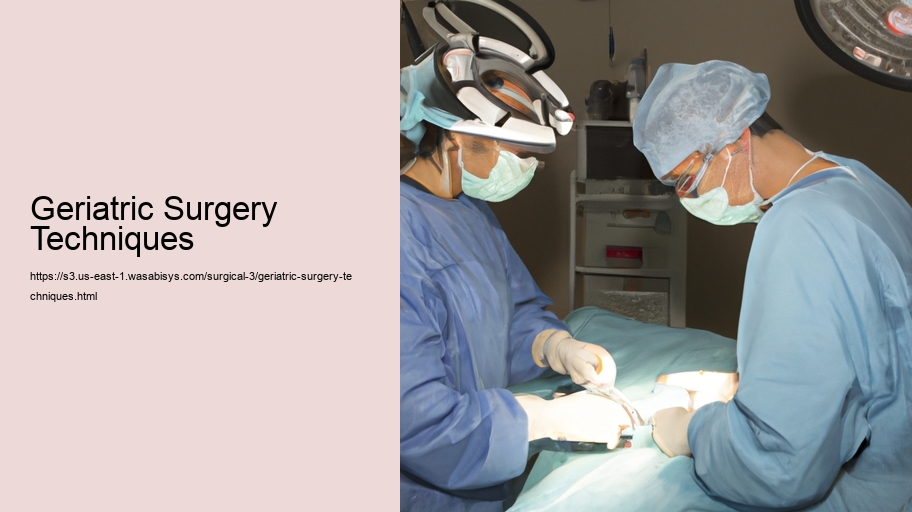As the global population ages, the field of geriatric surgery continues to gain prominence. Geriatric surgery refers to the surgical care of elderly patients, typically those over the age of 65. This specialized field recognizes that older adults often have different needs and considerations compared to their younger counterparts when facing surgical procedures. In this essay, we will delve into the various techniques and considerations essential to geriatric surgery.
Elderly patients present a unique challenge to surgeons due to their often complex medical histories and the presence of comorbidities. As a result, geriatric surgery requires a multidisciplinary approach that goes beyond the technical performance of a procedure. It encompasses preoperative assessment, perioperative management, and postoperative care, all tailored to the needs of the older adult.
Preoperative assessment is a crucial step in geriatric surgery. It involves a comprehensive evaluation of the patient's overall health status, including their mental and physical function, nutritional status, and social support system. This is where the concept of a "geriatric assessment" comes into play. This assessment helps identify any potential risks that could affect the outcome of the surgery and assists in the decision-making process regarding the necessity and type of surgery.
In terms of surgical techniques, there is an emphasis on minimally invasive procedures for the elderly. Techniques such as laparoscopic surgery offer several benefits, including reduced pain, shorter hospital stays, and quicker recovery times. These advantages are particularly significant for older patients, as they often have a reduced capacity to recover from large, open surgeries.
Another critical aspect of geriatric surgery is pain management. Elderly patients may have a different response to pain and pain medication, which can complicate postoperative care. Effective pain management is essential to prevent complications such as delirium, which can occur more frequently in the elderly following surgery. Therefore, a careful balance of analgesics, often employing multimodal pain management strategies, is employed to ensure patient comfort without increasing the risk of medication-related side effects.
Postoperative care for the elderly also includes early mobilization and physical therapy to prevent complications such as deep vein thrombosis, pneumonia, and muscle weakness. Rehabilitation services play a vital role in helping geriatric patients regain independence and functionality after surgery.
Geriatric surgery also involves ethical considerations, such as the decision to operate or not. The risks and benefits of surgery must be weighed against the patient's life expectancy, quality of life, and personal wishes. In some cases, the focus may shift from life-extending procedures to palliative care, which aims to provide relief from symptoms and improve quality of life.
Furthermore, communication with the patient and their family is a cornerstone of geriatric surgery. Understanding the patient's goals and expectations is critical in developing a care plan that aligns with their values. This often requires sensitive discussions about the potential outcomes of surgery and the possibility of not regaining full independence.
In conclusion, geriatric surgery is a growing field that requires a specialized approach to accommodate the unique needs of the aging population. It involves careful preoperative assessment, the use of minimally invasive techniques, meticulous pain management, and comprehensive postoperative care. The goal of geriatric surgery is not only to successfully perform surgical procedures but also to ensure that the overall well-being of the elderly patient is maintained, recognizing that quality of life is of paramount importance. As the number of older adults continues to rise, the demand for surgeons skilled in these techniques will undoubtedly increase, necessitating continuous advancement and adaptation in the practice of geriatric surgery.
